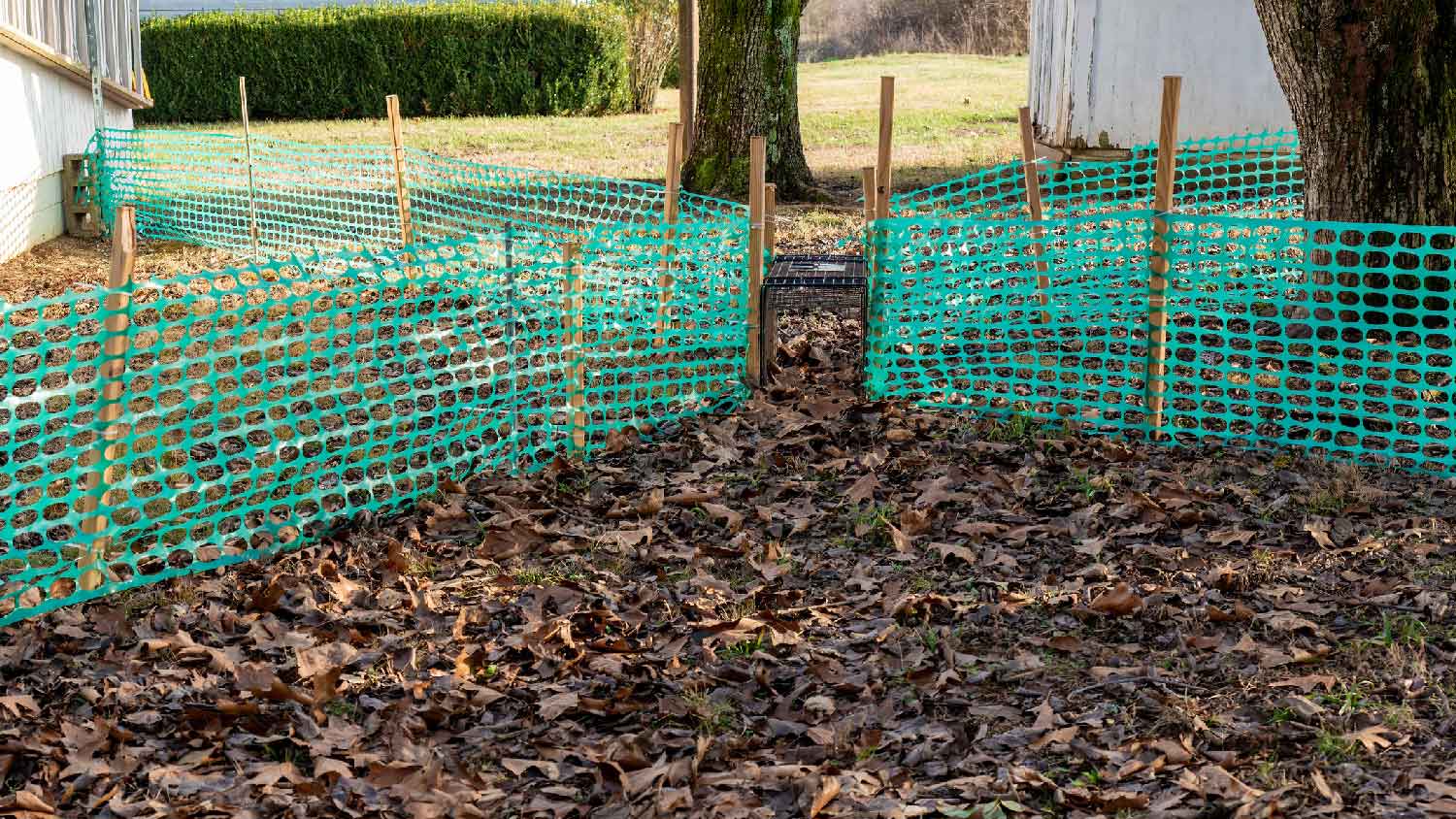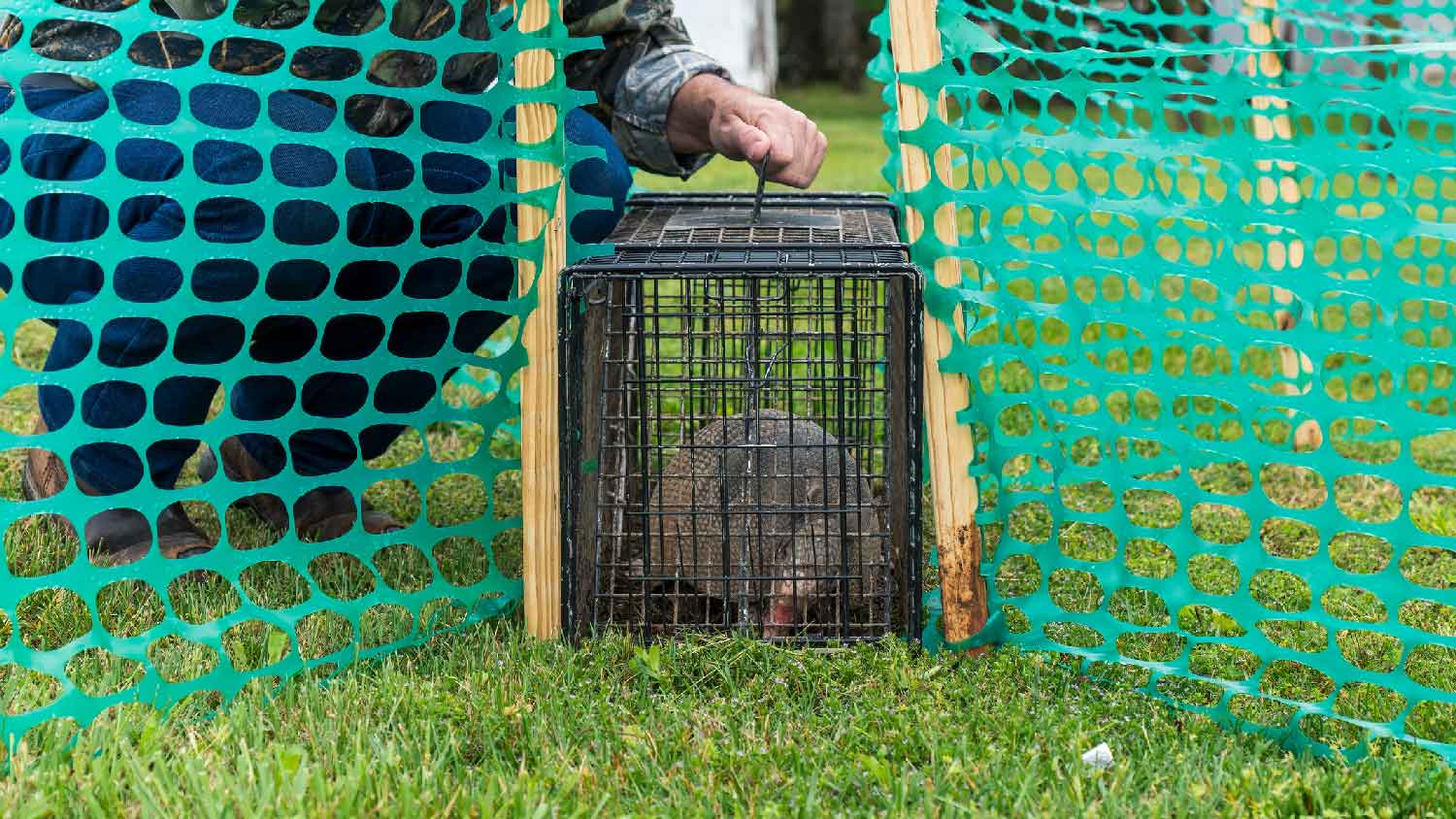
When budgeting for possum removal costs, consider number of animals, location, method of removal, and whether you do it yourself or hire a professional.
Keep your lawn hole-free with these tips for ambushing elusive armadillos


While armadillo removal costs about $280, investing in professional help saves time and ensures humane results.
Trapping an armadillo on your own can lead to scratches, bites, or even rare exposure to diseases like leprosy, especially if you mishandle the animal.
A wildlife control specialist understands local trapping laws and has the know-how to remove the animal without putting you or the armadillo at risk.
Setting armadillo traps requires proper equipment, such as two-door live traps and fencing materials.
Armadillo numbers are on the rise in North America, and while these sharp-clawed, armored animals aren’t aggressive to humans, they can be a nocturnal nuisance. Learning how to trap armadillos humanely may be your best bet if these expert diggers are laying waste to your lawn or damaging your home’s foundation to find food or make dens.
Below are steps for successful armadillo trapping, advice on when to call wildlife control specialists, and trapping alternatives to help you live peaceably alongside these non-combative critters.
Armadillo trapping can be tricky. They’re not as attracted to baits as some other animals, and there are regulations to consider. However, implementing good armadillo trapping techniques helps increase your chances of success.
Before setting up an armadillo trap, always check local regulations. Typically, humane trapping is permitted when armadillos are a nuisance that causes damage. However, the type of trap you can use, where you can release the animal, and how you can humanely dispatch it vary.
You’ll need to make, rent, or buy a suitable trap. The ideal armadillo live trap is 32 to 42 inches long and 12 inches high with a door on either end to increase the chances of the animal entering it.
All armadillos have poor eyesight and follow specific paths that guide them back to their burrows. If you know the armadillo is in its burrow, you can position the trap directly above the entrance. Alternatively, put it near the burrow entrance alongside a barrier, such as a fence or wall, or along a trail that looks like it has been well-trodden by the animal in the area where damage is occurring.

Consider the door position, stability, and timing when setting up an armadillo trap. Two-door traps allow you to position them so one door faces the burrow entrance and the other faces the path they return to it on. Place the trap on a flat surface and put a brick on top to prevent off-putting wobbling. If you set the trap at dusk, you’re more likely to catch a nocturnal armadillo.
Here’s the tricky part—armadillos don’t always go for bait. Unlike when getting rid of possums, armadillos instinctually dig for insects, so they aren’t motivated by the food you put in a trap. However, if you want to try something, the best baits for armadillo traps include earthworms, mealworms, crickets, and overripe fruit contained in a hanging stocking.
Position the bait where the armadillo will have to go far enough into the trap for them to trigger closure.
Once you have set and baited the trap, create a guiding v-shaped funnel to help lead the armadillo more effectively. Use wooden lumber boards or net fencing to help prevent these poor-sighted creatures from going astray and skirting around the side of the trap entrance. If the trap is up against a wall or fence, you might only need a wing on one side.
After setting out live traps for armadillos, check them at least once per day. It’s inhumane to leave an animal in the trap for extended periods, and they can injure themselves trying to dig out.

If you successfully trap an armadillo, the most common option is to remove the animal from your property before releasing it in the immediate vicinity. You can then seal up any burrows, remove attractants, and take measures to keep the unwanted animal out of your yard going forward.
More often than not, local regulations don’t allow you to relocate armadillos or other animals in a different area. Translocating carries the risk of spreading diseases, and the armadillos are more likely to get injured or die trying to navigate unfamiliar surroundings. If you don’t want to release the critter back into your neighborhood for fear it will return, contact a wildlife control professional to collect the animal.
Always proceed cautiously and wear thick, protective gloves if you have to handle a trapped armadillo. They have sharp claws and can bite when feeling under threat. While incredibly rare, there’s also a chance they can transmit leprosy to humans.
We recommend hiring a local wildlife control specialist to handle armadillo trapping for several reasons:
These elusive creatures aren’t easy to trap. To put it in perspective, in one study, only one armadillo was caught every 132 trapping nights. Your odds should be better when utilizing the skills of an expert.
You won’t risk getting a bite or scratch injury due to improper handling.
If it isn’t appropriate to release the armadillo, it’s better to leave the task of euthanasia to a professional.
Professionals are familiar with local wildlife trapping regulations.
The average cost to remove an armadillo is $275, but this can be worth it to increase the chance of success and reduce stress levels.
From average costs to expert advice, get all the answers you need to get your job done.

When budgeting for possum removal costs, consider number of animals, location, method of removal, and whether you do it yourself or hire a professional.

Your skunk removal cost will depend on several factors, including type, location, and more. Our guide will cover everything you need to know about skunk removal costs.

Raccoons on your property can cause a lot of damage to your home and yard. This guide breaks down raccoon removal costs so you can budget accordingly.

Using the best bait for skunks is a great way to capture these critters humanely. Here are the 5 most effective types homeowners can use.

There are three common types of scorpions that are likely to enter your home, with one being dangerous to humans. Know the difference so you can stay safe.

Find out how to keep unwanted animals out of your yard with these easy tips and tricks so you can enjoy your property in peace.